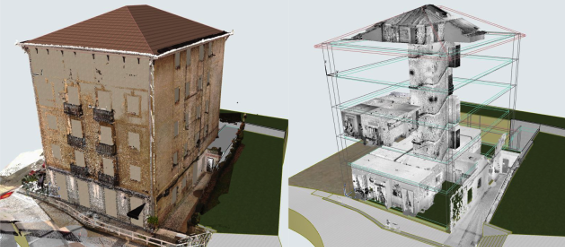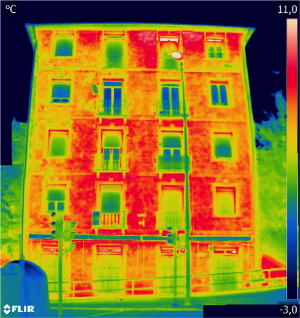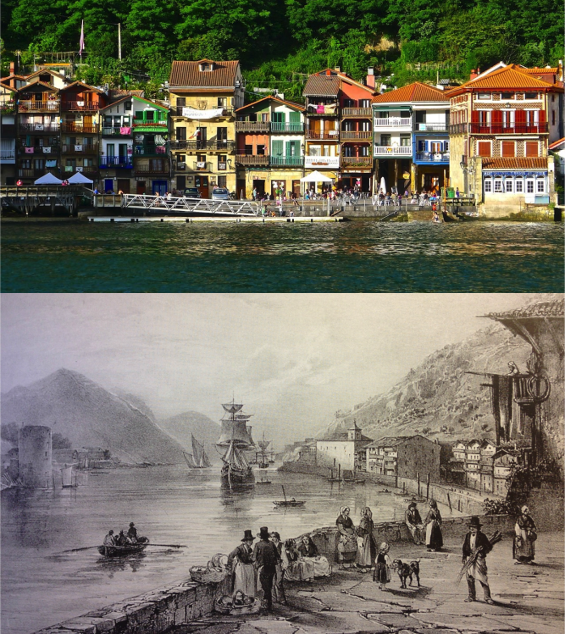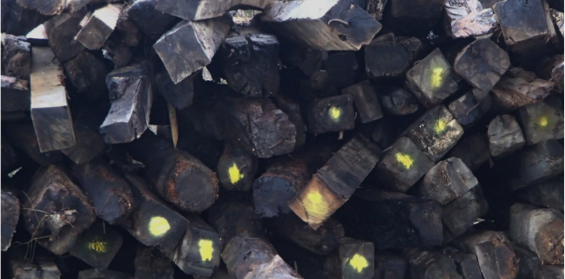Last summer, we devoted an issue of our newsletter to discussing the types of knowledge transfer work done in the Faculty of Fine Arts. In this issue, we are focusing our attention on the School of Architecture of the University of the Basque Country (UPV/EHU), based in Donostia/San Sebastian.
Architecture is a field with a huge and, above all, very obvious impact on society.Within the School there is a Department of Architecture, with nearly a hundred professors and researchers, along with sections of the applied physics, mathematics and language departments.The knowledge transfer projects that are carried out are highly diverse, but there are currently four areas of work that are worth highlighting: energy efficiency, heritage, new technologies and wooden structures.

Buildings are responsible for approximately 40% of energy consumption and 36% of CO2 emissions. The European Union is developing legislation aimed at improving the efficiency of its stock of buildings and it will gradually make it compulsory to carry out renovations to make them “nearly-zero” energy buildings, starting with the public authorities but, eventually, all other citizens will be affected.Therefore, energy efficiency is an area of great interest for architecture at present.
One related project that has been carried out in the school is the development of a protocol to analyse the energy consumption of a building in real time using a smartphone app.Thanks to this system, it is possible to quantify the changes in energy consumption as the relevant renovations are performed, e.g. insulating external walls or changing the windows, and to determine the optimal cost for the procedure. The project was carried out for the Basque Government, which will be obliged to carry out renovations in numerous publicly-owned buildings under the European regulations that will come into force in a few years.

“We created a virtual 3D model and then inputted the information from the sensors to show real-time user consumption and comfort. It's wonderful”, remarked Santiago Sánchez Beitia, a member of the Applied Physics Department and the lead researcher of a project in which over a dozen professors from the school have participated.
Of course, there are many other types of activities that could be carried out in this area through knowledge transfer agreements, including the simplest of all of them: the energy performance certification of buildings.However, when a company, institution or individual goes to the university in search of expert knowledge, the project is normally more complicated than a standard energy performance certification, as there are plenty of other options available on the market for this.
Another major area of work in the field of architecture involves identifying, cataloguing and highlighting the value of architectural heritage.Various stakeholders in our society, normally public actors, come to the university in search of expert knowledge that will help them to determine which buildings have heritage value and how to showcase that value.
We can cite many examples in the field of heritage, as it is an area which has been greatly developed. Santiago Sánchez Beitia led a project to produce a catalogue of Spanish lighthouses with heritage value.“Of the 190 that are in operation, I believe that 130 have heritage value”, remarked Santiago.Lighthouses are buildings that continue to serve a use for navigation, but they are increasingly automated and the attached homes of the lighthouse keepers have fallen into disuse, which sometimes leads to the deterioration of the building. “A lighthouse is a genuine signalling factory and, as such, it should be considered part of our industrial heritage”, explained Santiago.
Lauren Etxepare and Maialen Sagarna, from the Department of Architecture, led another project in 2011 to evaluate and catalogue various mills and ironworks in the Urola Valley for the ZAIN Foundation.“The purpose of the project was not only to catalogue what there was, but also to develop a method to do this based on objective criteria, to classify and determine the heritage value of the buildings,” explained Lauren.

In addition to the projects that have already been completed, there are currently professors from the Master’s Degree in Renovation, Restoration and Comprehensive Management of Built Heritage and Existing Buildings who are involved in an agreement with the Provincial Council of Gipuzkoa to analyse, identify, recover and “musealise” all heritage elements, be they architectural or urban, of Pasaia Bay.The area around the Bay has undergone industrialisation and deindustrialisation processes which, in many cases, has led to the deterioration of several areas.The Provincial Council is eager to restore them and it has commissioned this report with specific recommendations for action.The professors of the Master's Degree, including professors from the École Nationale Supérieure d'Architecture of Montpellier, have now been working on this for a year and hope to complete the work for the agreement this year.
“One of the key aspects,” remarked Santiago Sanchez Beitia, “is identifying the elements with heritage value, not just medieval elements, but also examples of fascinating architecture from the 19th and 20th centuries.Many industrial premises and buildings for workers that were constructed in that period are of tremendous value.”
This area of work includes the visualisation and representation of architectural elements through virtual representations or the creation of models (which sometimes includes 3D printing from virtual representations).The School has a FabLab that has been adapted for all digital manufacturing systems and is part of the FabLab network.
New technologies are an area that is closer to graphic expression than construction, but sometimes both areas overlap.For example, this is the case with BIM technology (Building Information Modelling), which allows you to model buildings and include geometric and geographical information, spatial relations and the properties of their components.This technology is used in several of the projects mentioned in this article and the European directives are pushing for this technology to be used in all public works and for it to replace drawings that are passed from hand to hand, as this makes it possible to centralise all of the information on a single file (.ifc), with which the different parties involved can work.
In Spain, the Ministry of Development has ruled that, from 17 December 2018, it will be compulsory to use the BIM methodology for public building tenders and, from the end of 2019, this will also apply to all public infrastructure tenders. This will require numerous changes, both for companies in the sector and the government itself.Iñigo León Cascante - a professor from the Department of Architecture and a member of the Basque BIM Committee - and a group of another 6 architects (five of them professors from the school) are developing a transfer project for the Basque Institute of Public Administration (IVAP) which analyses the new technology needs of the Basque Government.
“We have identified 229 jobs with BIM training needs, grouped into 4 professional profiles and 3 levels of in-depth training.And that is only in the Basque Government,” remarked Íñigo, “in addition to that there are other jobs in town councils, public enterprises and so on.When you start a project like this, you realise that it is not so easy to define what the public administration is in the broadest sense.”In addition to training recommendations, the work includes developing a technology implementation strategy based on those already launched in countries like the United Kingdom and Ireland.“Possibly one of the most urgent actions is to set up an observatory that will identify all of the buildings that are going to be built from December 2018”.
There is a miraculous building material that is making waves among architects. However, it is not a new material, although many of the industrial techniques that are used with it currently are.We are talking about wood, a familiar material that provides countless solutions for 21st century problems.

One of its main benefits is its sustainability:while producing a ton of cement will emit a ton of CO2 into the atmosphere, producing a ton of wood can remove about two tons of CO2 from it.Trees are a renewable construction material which also helps to reduce the levels of air pollution.However, there are also lots of practical advantages of building with wood.Construction is quick, people find it a nicer and more pleasant material, structural faults are easier to detect than with concrete and, in case you were wondering, it is not the most dangerous material when there is a fire, as concrete tends to explode and steel warps, while engineered wood is carbonised and the fire takes some time to burn it.
From its inception, the UPV/EHU has been part of an initiative of the Basque Government called Basotek, a project that aims to support the structuring of the wood value chain in the Basque Country.The UPV/EHU recently signed a knowledge transfer agreement connected to this initiative and several groups from the UPV/EHU with links to the wood industry are participating in it, including ESMAARQ (Wooden Structures in Architecture), whose lead researcher is Santiago Sánchez Beitia. “In this research group, we work on renovation, developing new architectural forms in newly constructed buildings through FabLab", Santiago told us.“The aim is to boost employment in all areas of the wood industry, but for our particular purposes, in the construction industry.We are absolutely convinced that in the medium term, it will be common to build conventional housing with structures and cladding made from wood and its by-products.These buildings will consume no energy and every aspect of them will be sustainable.
Altogether, we can see radically different knowledge transfer projects from the School of Architecture to society.For the professors involved in them, they are an incentive to keep updating their knowledge.“Transfer projects are the perfect excuse to update our knowledge and incorporate new ideas,” remarked Lauren Etxepare, speaking from her experience, “and it also makes us happy when our ideas get off the ground and become a reality”.
This type of project has an important impact on society, which is often obvious and visible for the professor involved.That can be rewarding in itself.However, Iñigo León regretted that:“6 young professors participated in our project, with varying levels of job insecurity.We are under a lot of pressure to publish articles in journals that are indexed by JCR and SCOPUS.When we take part in transfer projects, we can see that we are doing important work, tackling a social challenge to adapt to new technologies, and this is also related to our teaching. But then there is always the question of whether we should spend that time publishing.I think that the changes that we have seen in the latest call with the six-year transfer are on the right path, but it is still too soon to know if their actual implementation will also have an impact on teaching and research staff accreditation processes.At the moment, you need to have completed a conventional six-year period of research to request a transfer, but it is an incentive to see that at least this area is achieving greater recognition.”
The changes in the six-year transfer process have had everyone talking recently, both because of the IT problems of the call and because they make knowledge transfers more attractive to researchers.When the results of this initial assessment are published, we will devote an issue of this newsletter to analysing them.
Do you need an expert? Contact us
What is the benefit of contracting projects with companies?
¿Cómo puedo contratar proyectos con la Universidad?
Euskoiker has more than 30 years of experience managing all kinds of projects